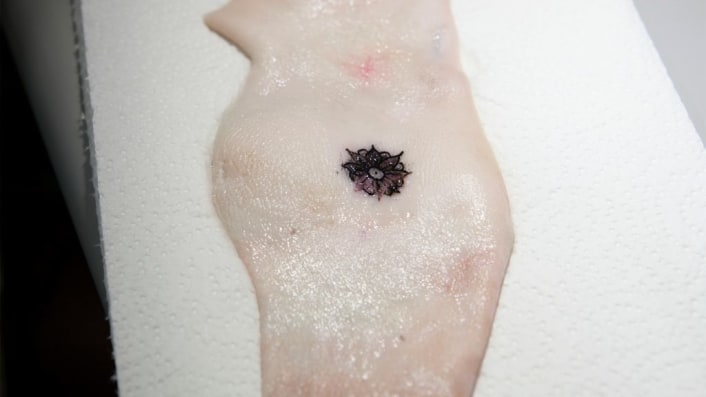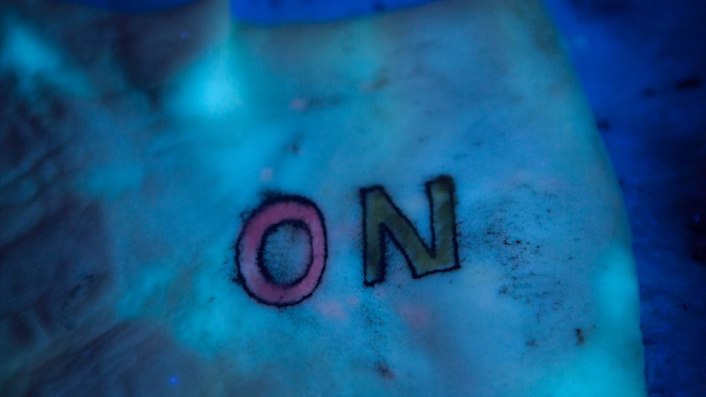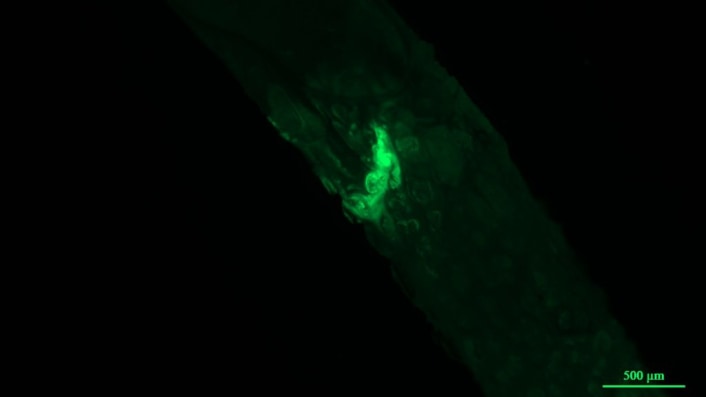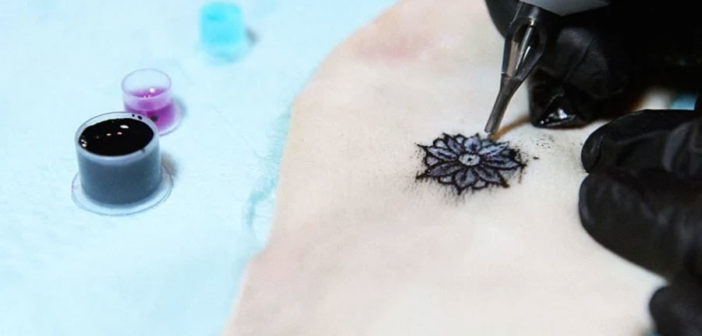Researchers at MIT Media Lab and Harvard Medical School teamed up to create tattoo ink that reacts to your body’s chemistry.
What if tattoos weren’t just decorative, but could convey real-time data about your body?
That’s the vision of the MIT Media Lab researcher Katia Vega, whose project DermalAbyss explores the possibilities of tattoos inked with biosensors instead of traditional ink. In collaboration with Harvard Medical School, Vega created three different types of biosensor inks that measure the shifts in interstitial fluid in your skin, changing color based on the levels of glucose, sodium, or pH in your body.




Vega, who is a computer scientist by training and is currently opening a computer science department at Peru’s University of Engineering and Technology, believes the skin can act as a new kind of interface. She’s been researching what she calls “beauty technology” for seven years, combining cosmetics and electronics to create things like smart fake eyelashes, conductive makeup, and RFID-enabled nail polish.But while these former projects enable wearers to interact with the outside world through different types of cosmetic interfaces, injecting biosensors below the skin allows Vega to connect internal biological processes with external interfaces. “I wanted to go deeper, not just on the top of your epidermis,” she says.
The applications are particularly intriguing in the area of health care. A diabetic patient with a biosensor tattoo that told them their glucose levels by changing between blue and brown would eliminate the need for multiple daily finger-prick tests that are usually used to check blood sugar levels. A sodium biosensor tattoo that glows under UV light could be used to inform the wearer of the amount of water in their body, which could be particularly useful for dehydration and overhydration. pH levels might indicate general health, which might be of interest to people who enjoy tracking their biodata. That tattoos could also provide a quick means of diagnosis when shown to a doctor.
Researchers are getting closer to turning the skin into an interface, while designers imagine what these interfaces might look like. Do they come in the form of a tattoo, like Vega suggests, or a temporary tattoo that doubles as a circuit? Do they act like a second skin? Will we use them to control our devices, or to better understand our bodies? Either way, there’s a whole lot more to explore on the surface of our skin.
–
This article first appeared in www.fastcodesign.com
Seeking to build and grow your brand using the force of consumer insight, strategic foresight, creative disruption and technology prowess? Talk to us at +9714 3867728 or mail: info@groupisd.com or visit www.groupisd.com



